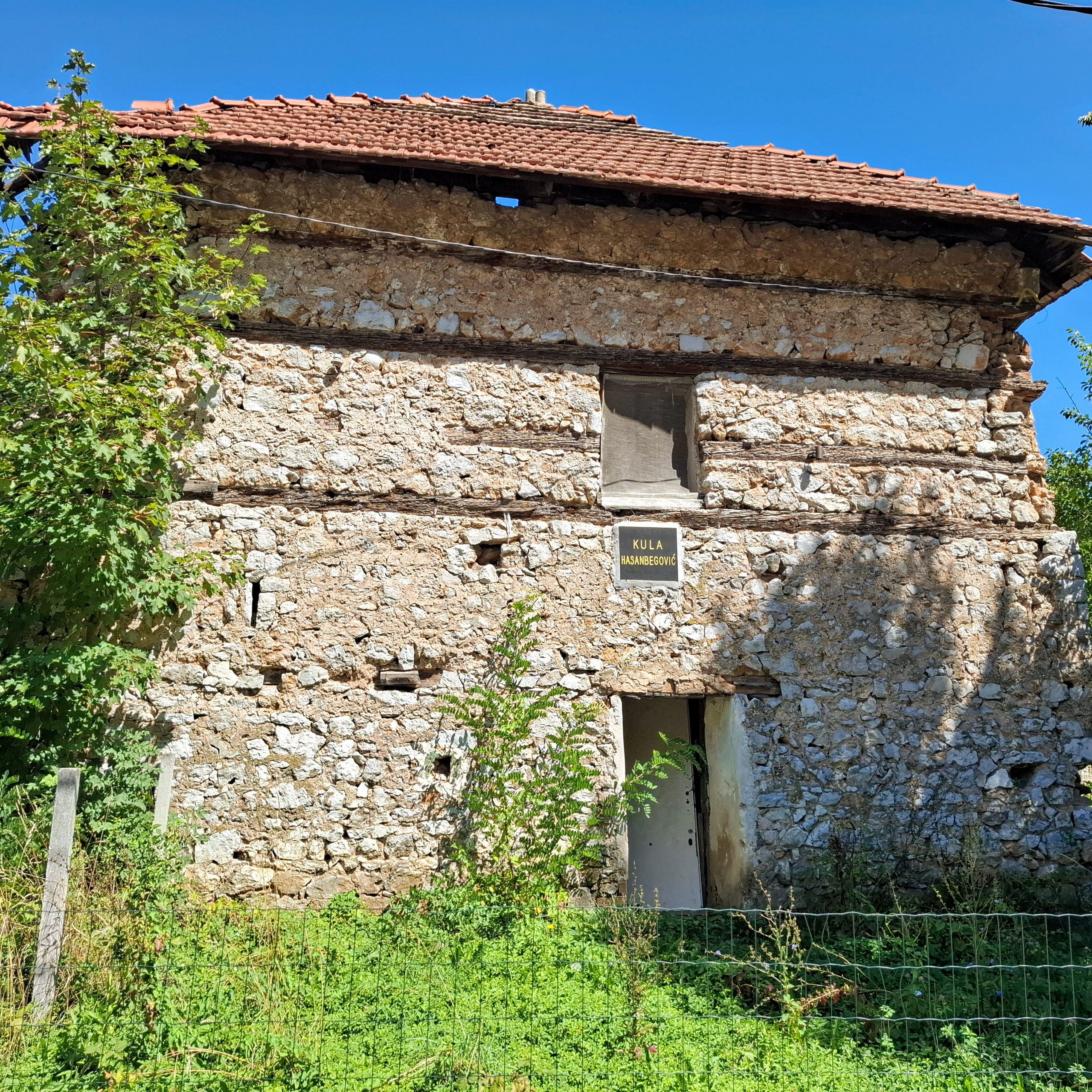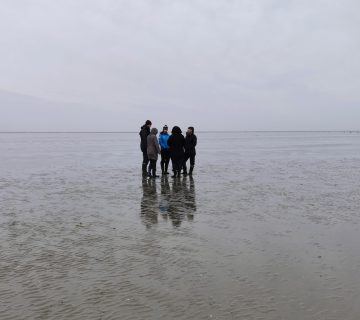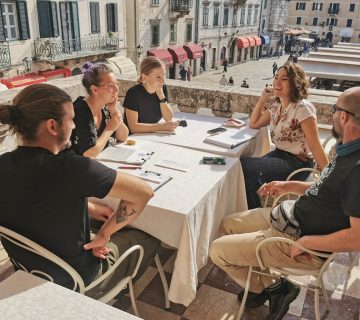The story of two ancient houses standing as witnesses of social and cultural history, and reminding us of our place in the historical chain.
South of Ilidža in Bosnia and Herzegovina, below the famous Olympic mountain Igman, lies the suburban settlement of Hrasnica. It was first mentioned in the Ottoman census of 1455 as a village of 40 households. The area was known as home to a number of residences of prominent Sarajevo families. Among them, two notable houses have survived to this day: Hasanbegovića Kula and the Semizova Kula, locally known as kule.
Old houses are some of the last material witnesses of the social fabric that once characterised this area. Their architectural form and spatial organisation embody traditional Bosnian ways of living, while also reflecting the values and norms of past communities. From a heritological perspective, such houses are not merely physical structures; they are carriers of memory and identity. Although modest in scale, they form part of a wider cultural landscape that deserves both recognition and protection. Safeguarding them is, therefore, not only a matter of architectural preservation, but also of affirming continuity and cultural pride. These houses remind us that heritage is a continuum: others lived before us, and others will live after us. In this way, they speak not only of the past, but also of our place within a much larger historical chain.
The first house, the Kula Hasanbegovića, was most likely erected at the turn of the 18th to the 19th century. Archival records confirm its existence in 1817, when the estate of mula Abdulah Burek was inventoried after his death. Oral tradition from the Hasanbegović family recalls that the house originally belonged to the Rustembegović family before passing into Hasanbegović ownership in the late 19th century. Architecturally, it was an almost square structure, consisting of a ground floor and two upper levels. The ground floor served as a storeroom (magaza). Above it were living quarters, including a halvat (main room), a kitchen, and storage spaces. The upper floor featured spacious wooden balconies (čardaks) and a high pyramidal roof once covered with wooden shingles. Built of dressed stone bound with lime mortar and reinforced with oak beams (hatule), the house displayed both strength and refinement. A semi-circular stone arch crowned its large wooden entrance doors, while carved inscriptions (tarih) once recorded its construction.
A short distance from the first house stands the Semizova Kula (formerly Turhanija House). Historical records note it in 1889 as part of the estate of hadži Mustafabeg Turhanija of Sarajevo. In 1896, the property changed hands several times before it was acquired by the Semiz family, who maintained it throughout the 20th century. This house also demonstrates a mix of residential and practical functions. Its massive ground floor of cobbled stone, open space with few windows, and stabling facilities highlights its practical role, while the upper floors contained living rooms with wooden cupboards (musandare), built-in shelves, seating platforms (minderi), and even early heating systems with clay stoves. A wooden veranda (kamerija) on the second floor, together with large windows and Austro-Hungarian style doors introduced during later renovations, reflects changing architectural influences. The Semizova Kula is recognised as a National Monument of Bosnia and Herzegovina.
Today, these houses stand as some of the oldest surviving structures in Hrasnica. Once symbols of status, security, and adaptation to the local environment, they are now silent witnesses of social history. Weathered walls and traces of graffiti reveal the challenges of heritage preservation, while their endurance illustrates resilience. Interpreting them does not only mean recounting their architecture or owners. It is about recognising how such houses embody the transition from feudal estates to modern communities, how they mirror the shifts in land ownership, and how they illustrate resilience within a turbulent historical context.
These houses of Hrasnica, among the oldest, if not the oldest, surviving residential buildings in the area, represent a rare and tangible link to Sarajevo’s historical and social development. Their preservation is crucial not only for architectural study but also for understanding patterns of land ownership, family lineage, and daily life in the region from the Ottoman period through the 19th century. As scarce examples of this building typology, they provide invaluable insights into local craftsmanship, construction techniques, and adaptive strategies to the environment. Protecting and interpreting such structures underscores the broader significance of heritage: to maintain continuity of memory, foster identity, and inspire appreciation for cultural landscapes that are increasingly vulnerable to urban expansion and neglect.
Edo Mesic is former Country Coordinator Bosnia for Interpret Europe. Currently, he is a freelance archeologist, interested in GIS, heritage interpretation, heritology, landscape archeology and cultural landscape. Edo can be contacted at: edomesic0@gmail.com.
To cite this article: Mesic, Edo (2025) ‘Kula Hasanbegovića and Semizova Kula’ in Interpret Europe Newsletter 3-2025, pp. 4–5.
Available online: Newsletter autumn 2025




